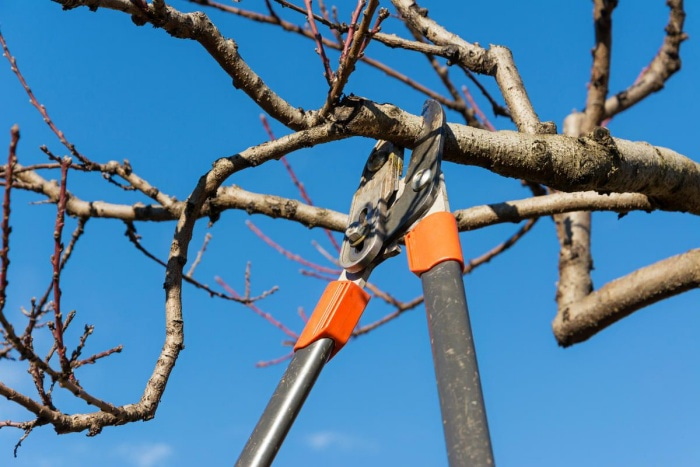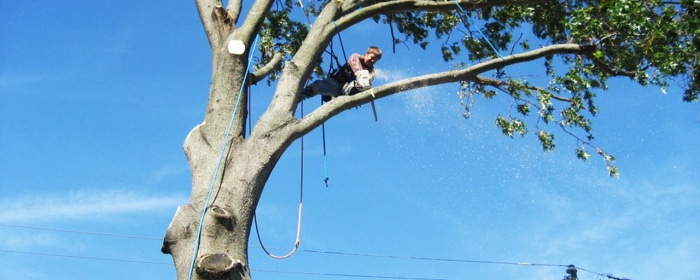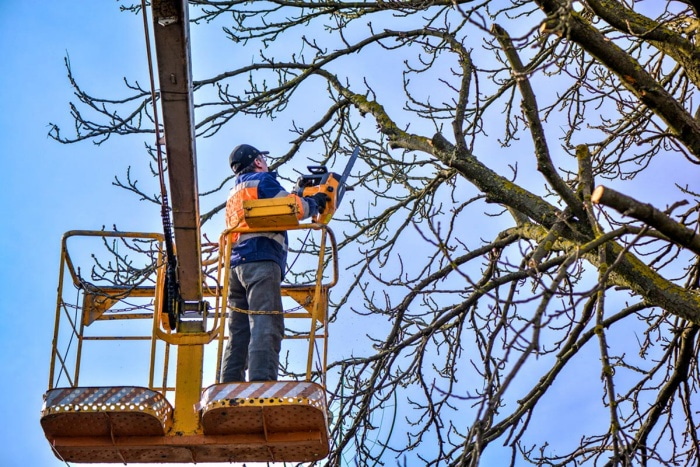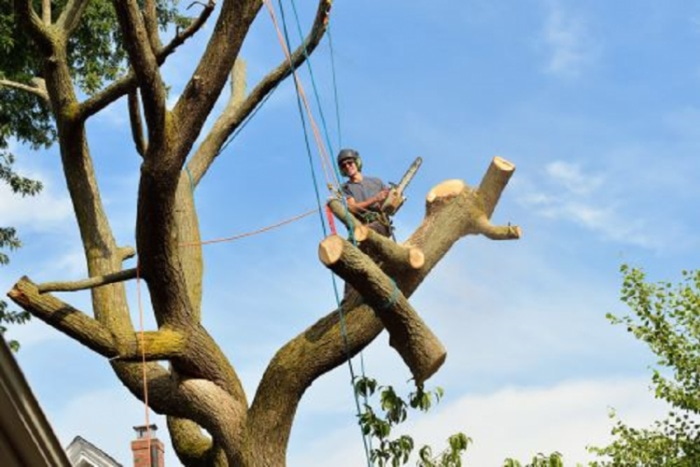It is such a threat to the roof and the entire property if there are any limbs over your house. On windy days, branches scrape across roof shingles, removing layers of asphalt.
Their leaves will fall right onto your roof or into your gutter, causing mildew, degradation, and leaks. Even worse, if the tree is injured or sick, branches may fall onto your house during a storm, which can be dangerous for your family.
So if you are wondering how to cut tree limbs over your house, keep scrolling. This article will give you all the necessary information to get things done precisely and safely.
Cautions Before Making A Retouch
The branches can be harmful since they are already dangling over your roof. If you make any mistakes, the branches may fall, which will be costly necessitate repairs to your rooftop.
Besides, if you try to do it yourself, you’ll have to climb a ladder to reach the branches, which puts you in danger also.
Thinner limbs are more accessible to remove from a safety viewpoint than bigger ones. Cutting the branches into smaller parts is a quick and safe technique to ensure a good job.
If the limbs are too big, maybe you should call for an arborist instead.
So, when you decide to do a touch-up for those trees, you should know all the cautions and the risks below so that no pity would ever happen:
- The risk of a cut-down tree limb crashing through the roof of the home
- Any wiring and electrical power sources linked with the tree limb may get damaged
- If the tree limb you’re working with is too huge, there’s a possibility of the entire tree bowing down
- If there’s a storm or strong winds, a tree branch may fall on your home, causing significant damage
- These branches can continue to grow and touch sections of your or your neighbor’s house in some fast-growing trees, which is unwelcomed
Things You Need Before Cutting Limb Over Your House
Cutting down a tree hanging over the house does not always have to be done by experts. First, however, you need to make sure of your own safety.
It will require some woodworking equipment during the procedure to assist you with the project. Before going into the stages, please have a look at the list to ensure the job will be done well:
- A chainsaw/pruning shear
- A ladder
- Thick nylon ropes
- Safety gears
- A tree felling wedge
How To Cut Tree Limbs Over Your House (Step-by-step Guide)
Step 1: Use a heavy rope to tie a knot
The most important thing is to make sure that the tree branches that have been chopped off do not fall on your roof.
The easiest technique to achieve this is to tie knots in numerous locations with a strong nylon rope. Place the ladder at the branch’s end and tie a knot in it.
Continue to attach the other end of the rope in a safe zone on another tree limb. The more knots you require, the heavier the branch.
Step 2: Identify the collar of the tree branches
The branch collar is a region where the main tree’s development is visible. A ridge circle where the bark is thicker than the rest of the branch may be seen.
However, cutting the limb around the notch will be easier since it needs less effort. Once you’ve located the tree collar, you can move on to prepare for the cut.
Step 3: Cut a downward angle
Use a strong chainsaw or a pruning shear to cut off the limbs depending on the type of tree and the branch thickness.
After that, begin making downward incisions to keep water from pooling in the wound, which might cause the tree to rot. The branch should fall off once you’ve finished chopping.
That’s when the ropes you tied previously should keep the tree limb from falling over.
Make sure you’re following safety precautions while dealing with a tree branch. For example: make sure your footing is strong and steady, know the weight limit of your ladder, and wear safety glasses.
Step 4: Bring the branches down to the ground
In this step, the branch will be hanging with the support of the rope. Now, it’s time to untie the knots. You will need some other people to help you during this process.
If the limb is not big, pull the rope away from the house, then carefully untie each knot. In case the limb is bigger than you can handle, have someone on the ground to assist you in adequately placing the branch.
FAQs
1. How Much Does It Cost To Trimming Tree Limbs?
On average, professional tree pruning costs usually take from $315 to $700, with the majority of $475.
A modest tree pruning job may cost as little as $85 for specific households, while a big tree over 60 feet tall could cost as much as $1,267.
There are many factors that could affect your overall cost, including the number of trees that need to be trimmed, the health of the tree, and the location of the tree.
For example, it may be more expensive if you also need a tree or stump removed.
2. How Often Should I Have My Trees Trimmed?
Depending on the tree’s type, size, age, and health, each tree will have a different time to get trimming.
Mostly, older trees should be cut every 3-5 years, while younger trees should be pruned every 2-3 years.
A fruit tree should be trimmed once a year, but some evergreens can go for years without needing to be pruned.
However, evergreen trees can live for many years without needing any cut. You should ask an expert to know exactly when you should trim your tree.
3. Can You Kill A Tree From Over Pruning Its Limbs?
The harm caused by over-pruning can be significant, although over-pruned trees and shrubs typically do not die.
Pruning too much will limit the number of leaves available to feed the tree. On the other hand, if you prune a tree too heavily or the cuts are done incorrectly, it might become weaker, allowing pests and diseases access to the tree.
If you over-pruned your trees, you should provide an adequate amount of fertilizer and water for them. In addition, because of the reduction of photosynthetic capability, your plant will need more food to grow back.
Conclusion
Trimming tree limbs over your house is dangerous, and mistakes may cost you a lot more than what people often think of.
By the end of this guide, I hope you find it applicable and know how to cut tree limbs over your house correctly.
However, the best way is to leave the work to a qualified and insured arborist. They know how to correctly trim trees and remove branches without causing damage to your property. Take care!
Read more: How To Fell A Leaning Tree?




